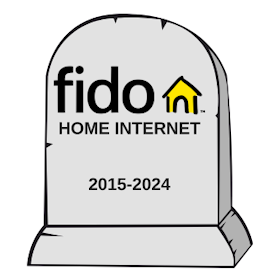
Zoom uses roughly 540MB-1.62GB of data per hour for a one-on-one call, and 810MB-2.4GB per hour for group meetings. Mobile users will likely consume slightly less data due to Zoom optimizing its bandwidth based on your connection. Zoom's data consumption depends heavily on factors like your streaming quality, call length, and the number of features you use in a given meeting.
Whether for remote business meetings or virtual happy hours, Zoom has emerged as one of the top video conferencing apps on the web. But live streaming is notorious for eating into your monthly data allowance—so how much data does Zoom video conferencing actually use?
The answer isn't completely clear-cut: Zoom meetings use up different data totals depending on how long your meeting is, how many people are on the call, whether you're using any collaborative features, and even whether you choose standard or high-definition streaming. If you're working from home, Zoom could be a data-hog; if you use Zoom once a week for a group trivia game, it likely uses much less.
Let's take a look at Zoom's data use for one-on-one calls vs. group calls, how Zoom uses data on mobile phones, as well as some of the most important factors that influence Zoom data usage.
Zoom Data Usage—1:1 Meetings
| Stream quality | Download speeds | Upload speeds | Total data use |
|---|---|---|---|
| High (default SD) | 270MB/hour | 270MB/hour | 540MB/hour |
| 720p (HD) | 540MB/hour | 540MB/hour | 1.08GB/hour |
| 1080p (full HD) | 810MB/hour | 810MB/hour | 1.62GB/hour |
Depending on the quality of your stream, you'll generally consume between 540MB and 1.62GB of data per hour if you're using Zoom to meet one-on-one with another user. Only need 30 minutes to take care of business? Cut those numbers in half to get your approximate total.
Zoom Data Usage: Group Calls
| Stream quality | Download speeds | Upload speeds | Total data use |
|---|---|---|---|
| High (default SD) | 450MB/hour | 360MB/hour | 810MB/hour |
| 720p (HD) | 675MB/hour | 675MB/hour | 1.35GB/hour |
| 1080p (full HD) | 1.2GB/hour | 1.2GB/hour | 2.4GB/hour |
Your virtual happy hour or weekly WFH office sync-up will generally use between 810MB and 2.4GB of data in a given hour. Like 1:1 calls, Zoom data use for group meetings depends on your streaming quality and the length of your call, among other factors.
How much data is enough?
Zoom meetings aren't the only thing draining your bandwidth with big data use—every activity you do online consumes a different amount of data. We'll help you figure out how much data you generally need based on the things you most commonly do on the web, from scrolling through your social feed to working from home, plus how fast your internet should be to guarantee smooth sailing.
Factors of Zoom Data Use
There are a number of things that determine how much data your Zoom call will eat up at a given time, including your stream quality, connection speeds, and features in use. Your data consumption could change from WFH meeting to meeting because this combination of factors is likely different each time you log on. Let's take a peek at why.
Using multiple features
If you turn off your own video while on a call, you'll use less data, as you won't be uploading your own video feed to the overall stream. Simply watching a webinar uses less data than hosting a group call yourself—in the second scenario, you're not only uploading your video feed, but also likely sharing your screen, managing a live chat feed to answer questions, and even cloud recording for future viewing. Using one of Zoom's most popular features, the digital background, also draws more data to consistently project the virtual image behind you.
Stream quality
Your stream quality also affects how much bandwidth your Zoom call takes up. As shown in the charts above, streaming at semi-HD 720p uses less data per hour than streaming at full-HD 1080p.
By default, Zoom should only use the least bandwidth it can to give you an adequate connection, meaning HD streaming isn't automatically enabled. This is great for those concerned about their data usage, but some users may want a clearer, more responsive experience. If so, you can manually change your streaming quality in your Zoom settings by checking the box that enables HD video.
Speed
Speed is another factor influencing the amount of data Zoom uses on a given call. According to the company's bandwidth requirements, Zoom's speed minimums for efficient streaming are as follows:
| Minimum download speeds | Minimum upload speeds | |
|---|---|---|
| 1:1 calling | 600Kbps-1.8Mbps | 600Kbps-1.8Mbps |
| Group calling | 1.0Mbps-3.0Mbps | 800kbps-3.0Mbps |
| Screenshare only | 50-150kbps | 50-150kbps |
| Audio only | 60-80kbps | 60-80kbps |
The range for download and upload requirements varies based on whether you're streaming in high quality, 720p, or 1080p. While faster speeds don't specifically require more data, they do tend to lead to higher data consumption. This is because you're able to do more online activities in a shorter amount of time. Streaming apps (like Zoom) also typically adjust their stream quality to the optimal resolution supported by your available bandwidth, as mentioned above. The better your connection, the higher your default quality, and the more data Zoom will use.
Zoom vs. other video conferencing apps
Wondering how Zoom stacks up against the competition for your work-from-home needs? Jump over to our review of the best video conferencing software.
How to Reduce Zoom Data Usage
If Zoom is simply taking too big a bite out of your monthly data, there are some quick and easy ways to reduce your Zoom data and bandwidth use.
- Reduce your video quality. If you've enabled HD video, drop it back down to standard definition to use fewer data bytes.
- Turn off your camera. (This is especially helpful for those early-morning video calls before you've had time to brush out your bed head!).
- Minimize your use of screen sharing. Often, people will continue sharing well past the time the rest of your team needs to see your screen. Or, instead of screen sharing altogether, use collaborative tools like Google Docs or Office Documents to allow your whole team to see the same items at the same time.
Data and Internet Plans for Zoom
In order for your next happy hour to go off without a hitch, you'll want to have a data plan that fully supports your data usage. Before you jump on your next Zoom meeting, take a look at some of the most popular wireless and internet providers below.
Zoom Data Use on Mobile
If you're often on the go, Zoom's mobile app helps you jump into a call no matter where you are. Though Zoom has the same minimum bandwidth requirements for both desktop and mobile, in all likelihood, your data usage will be lower when using the mobile app. This is because some features that eat up a lot of data (like gallery view, for example) are automatically turned off in favor of a simplified experience.
As with a desktop experience, though, the amount of data you use with Zoom on mobile depends on your network connection (3G vs. 4G LTE), streaming quality, and enabled features. The app will optimize your experience based on your network, adjusting itself automatically to fit your connection speeds and quality. If your bandwidth is low, Zoom will scale down your screen size automatically to save space.
Keep all of this in mind when choosing a cell phone plan to support your video calls. To avoid using up all of your monthly data, try Zooming on Wi-Fi as much as possible, or choose an unlimited plan that includes HD streaming. We like Rogers' Infinite 40GB plan, which includes 40GB of premium data before deprioritization along with unlimited talk and text. Check out additional options that include hotspot data to make the most of your Zoom app.
Zoom Data Use: FAQs
How much data does Zoom use per hour?
Zoom's data usage varies slightly based on whether you're on a group call or you're meeting one-on-one. Zoom uses around 540MB-1.62GB of data per hour for a one-on-one call, and around 810MB-2.4GB per hour for group meetings.
How do I enable HD video quality on my Zoom app?
Click on your profile photo in your Zoom client and select "Settings." Under "Video," find the checkbox labeled "HD" and check it to "on."
Can I use Zoom on my phone?
Yes! Zoom has a mobile app that allows you to video call using your phone's data allowance or by connecting to Wi-Fi.
Which activities use the most data on Zoom?
There are two big data hogs when using Zoom: group calling with your video enabled, and screen sharing. To save on data usage, disable your camera, avoid screen sharing by opting for collaborative documents, or make sure to disable screen sharing the moment you no longer need it.
How much internet speed do I need for Zoom?
To give you the most efficient experience, Zoom needs a minimum download/upload speed of 600Kbps for one-on-one calls. For group calls, you'll need at least 1.0Mbps for downloads and 800Kbps for uploads to have a lag-free experience.
Related Articles
Find Better Internet and Phone Plans
Hundreds of internet plans unpacked. All the facts. No surprises.
Internet Providers by Provinces and Territories
- Internet in Alberta
- Internet in British Columbia
- Internet in Manitoba
- Internet in New Brunswick
- Internet in Newfoundland and Labrador
- Internet in Northwest Territories
- Internet in Nova Scotia
- Internet in Nunavut
- Internet in Ontario
- Internet in Prince Edward Island
- Internet in Quebec
- Internet in Saskatchewan
- Internet in Yukon Territory










.jpg?w=160&h=160&usm=20&usmrad=0.8&fit=crop)







































